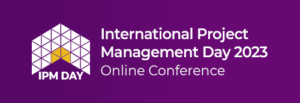By Veronica Thraen
August 23, 2023
The two questions I am asked most frequently as a project manager (PM) are: “How did you get into project management?”, and “What do you like about it?”
The answer to the first question is straightforward. I had no idea what a project manager did, but a hiring manager recognized that I had the appropriate “power skills” (also referred to as soft skills) to succeed in project management. The rest, as they say, is history.
The answer to the second question is a bit more involved. Here are the top four ways I thrive as a project manager (and you can, too!).
1) Wear Many Hats
If you love wearing many different hats, then project management might be right for you. For example, a project manager can take on additional responsibilities if the team is shorthanded, such as building a business case (product management), developing requirements (business/technical analysis), or helping with testing (quality assurance).
Wearing multiple hats is a great way to learn all phases of the product development process — and become a more marketable project manager.
2) Creatively Solve Problems
One of my favorite aspects of being a project manager is having the opportunity to use my creative side to solve problems. This could include collaborating with the team to adjust the methodology as needed, implementing a new process, or finding innovative ways of facilitating meetings to increase engagement.
It is possible for a PM to have multiple projects that are managed differently based on the type of project or complexity. Some may require extensive documentation and others may not. Status reporting could also be different by project based on stakeholder and/or executive requirements. Always be on the lookout for new or better ways of managing on a project-by-project basis.
3) Work With Diverse Teams
In a survey by the Project Management Institute (PMI), 65% say that the “ability to work with others across boundaries to make decisions” is a top power skill. In a world where many people are working remotely, a PM must effectively communicate with distributed teams, including teams located in other countries with cultural differences that must be considered.
Project managers may also work with executive sponsors, external customers and contractors, internal cross-functional teams, and vendors. They need to be able to understand complex issues and craft their communications appropriately, depending on the audience. For example, a PM may need to distill a complex message into high-level points for an executive, while communicating technical details to a cross-functional team.
4) Help The Team Reach an End Goal
Finally, the most rewarding aspect of being a project manager is being a part of a team that works well together and effectively pushes through every challenge and roadblock to successfully achieve their end goal.
Project management is a growing profession that’s in high demand. The latest PMI Talent Gap Report states that by 2030, 25 million project professionals will be needed globally to fill project management roles — or 2.3 million per year — to keep up with demand.
Do you believe you have the skills to become a top-notch PM professional? If so, consider a certification by PMI or other organizations. You may just stumble into an enjoyable and profitable career just like I did.
Veronica Thraen is the Owner and Principal Consultant at Maven Project Management, a technology project management consulting firm in Phoenix, Arizona that helps growing organizations put processes and tools in place to keep projects on track for long-term growth and success. Her leadership advice has been featured by Ellevate Network, The Huffington Post, and Forbes.
Registration for International Project Management Day Online Conference is now open! Get IPM Day for only $69 now through September 1st! Register here.
Disclaimer: The ideas, views, and opinions expressed in this article are those of the author and do not necessarily reflect the views of International Institute for Learning or any entities they represent.




